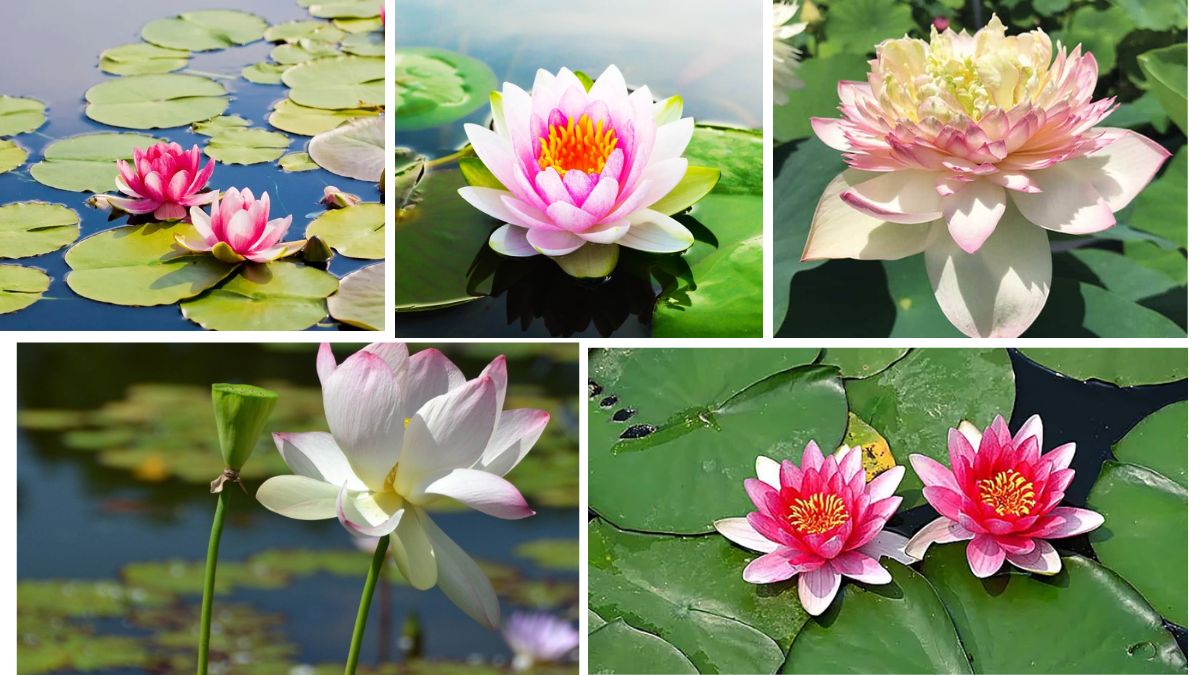The lotus, revered for its spiritual symbolism and stunning beauty, is one of the most enchanting aquatic plants to grace ponds and water gardens. Associated with purity, rebirth, and enlightenment in many cultures, especially in Asia, the lotus (Nelumbo nucifera) thrives in warm, sunny climates and shallow still waters. If you’re captivated by this sacred bloom and wish to grow it in your garden, this comprehensive guide will provide all the information you need—from choosing the right variety to maintaining your pond for healthy growth.
1. Understanding the Lotus: Botanical and Cultural Background
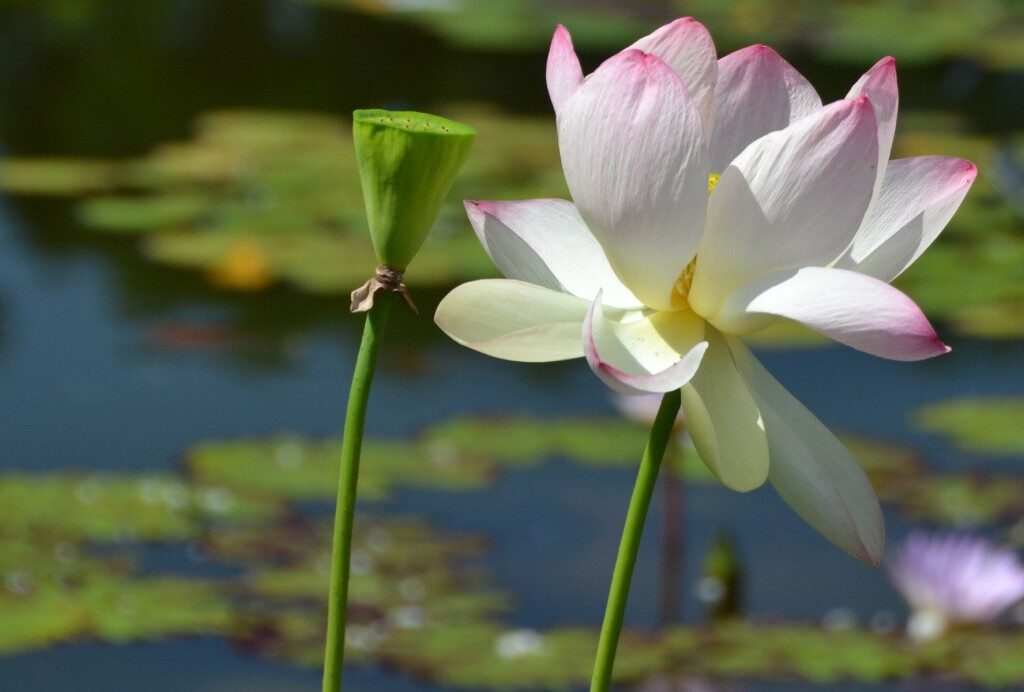
The lotus belongs to the genus Nelumbo, primarily Nelumbo nucifera (the sacred lotus), native to Asia. Despite often being confused with water lilies, lotus flowers stand above the water surface and have a distinctive seed pod that matures into a cone shape.
Cultural Significance:
- Hinduism & Buddhism: A symbol of divine purity, spiritual awakening, and resurrection.
- Chinese Culture: Associated with harmony, longevity, and perfection.
- Art & Architecture: Commonly used in temple carvings, paintings, and pond designs.
2. Best Climate and Conditions for Growing Lotus
Lotus plants are tropical to subtropical and flourish best in USDA zones 4–10, depending on how they’re overwintered. They require:
- Full sunlight (6–8 hours/day)
- Still or slow-moving water
- Warm temperatures (ideal water temp: 75–87°F or 24–30°C)
If you’re in a cooler region, you can still grow lotus in containers and move them indoors during winter.
3. Choosing the Right Lotus Variety
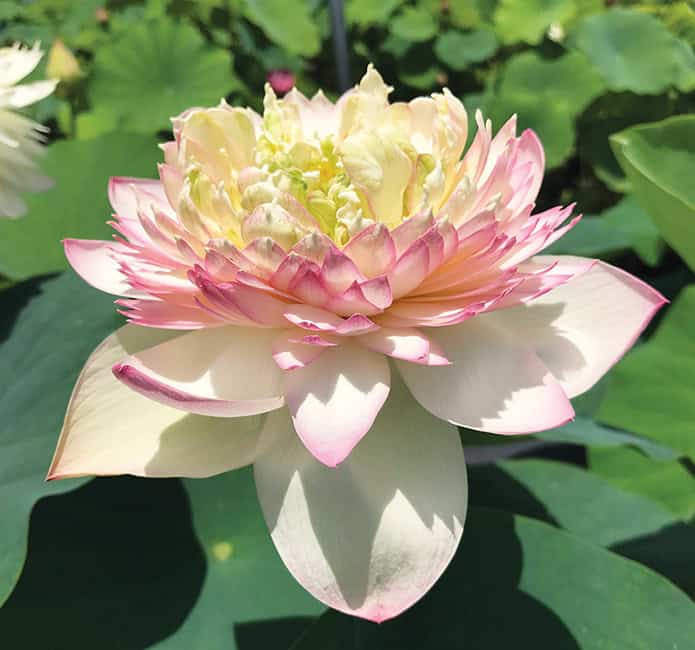
There are two main types of lotus:
- Tropical Lotus (Annual in cold climates)
- Hardy Lotus (Perennial, can survive mild winters)
Popular Cultivars:
- ‘Momo Botan’: Dwarf pink double-flowered variety perfect for containers.
- ‘Perry’s Giant Sunburst’: Large yellow blooms, ideal for larger ponds.
- ‘Mrs. Perry D. Slocum’: Unique changing color from pink to creamy yellow.
Choose based on your space, water garden size, and climate.
4. How to Grow Lotus from Tubers
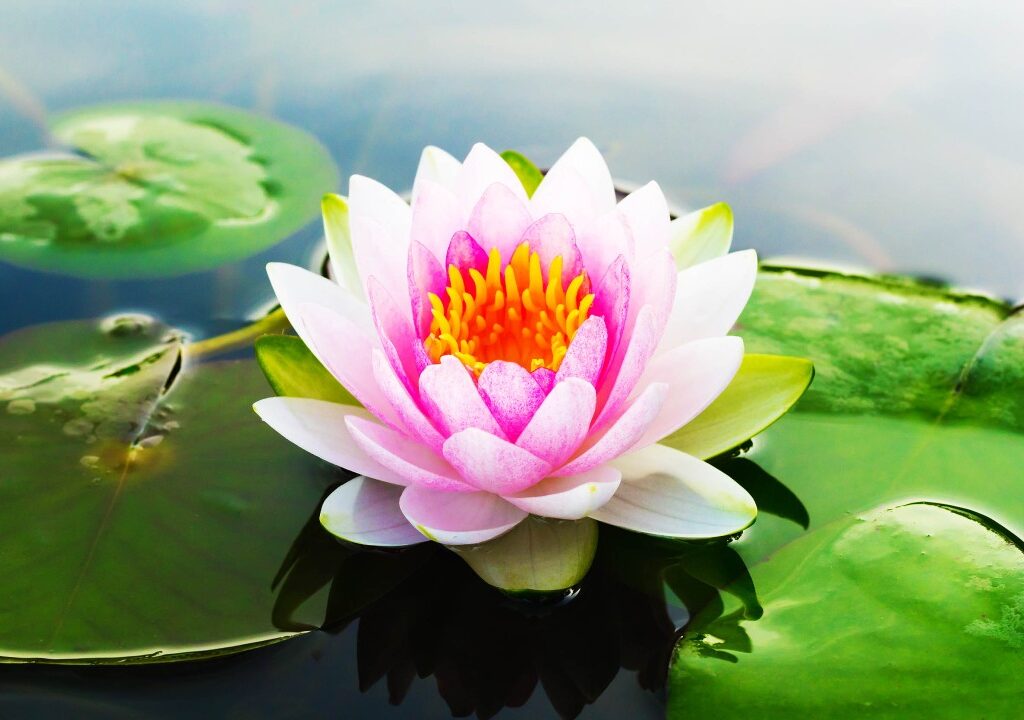
Lotus plants are typically propagated from tubers, not seeds, for quicker and more reliable results.
Step-by-Step Guide:
Step 1: Choose a Wide, Shallow Container
Use a 15–20 inch wide container with no drainage holes to prevent water from leaking. Depth should be 6–10 inches.
Step 2: Add Heavy Garden Soil or Clay Loam
Avoid potting mixes or fertilizers at this stage. Fill 2/3 of the container with heavy soil, leaving room for water.
Step 3: Plant the Tuber Horizontally
Place the tuber gently on the soil, covering the root ends lightly while leaving the growing tips exposed. Don’t bury completely.
Step 4: Add Water Carefully
Slowly add warm water until it’s a few inches above the soil. Keep it still to avoid disturbing the tuber.
Step 5: Provide Sunlight and Warmth
Place the container where it gets at least 6–8 hours of direct sunlight. You’ll notice growth in about 1–2 weeks.
5. Transplanting to a Pond or Water Feature
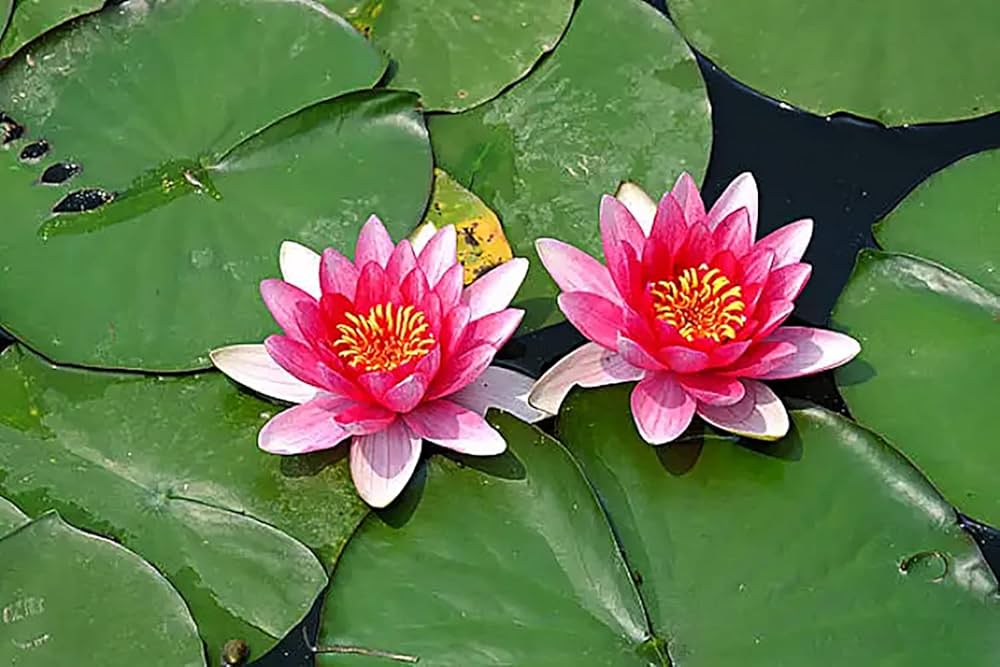
Once the lotus establishes leaves, you can move it to a garden pond.
- Depth: Ensure the plant’s crown sits 2–12 inches below the water surface depending on the variety.
- Sunlight: Keep it in full sun for optimum blooms.
- Water Quality: Use dechlorinated or rainwater if possible. Avoid fast currents and waterfalls nearby.
6. Fertilizing Your Lotus Plant
Wait until the plant develops 5–6 leaves before fertilizing.
- Best Fertilizer: Use aquatic plant tabs (slow-release) like 10-14-8 or 10-10-10.
- Frequency: Feed monthly during growing season (late spring to summer).
- Caution: Over-fertilizing can burn young roots or cause algae blooms.
7. Maintaining and Pruning Lotus Plants
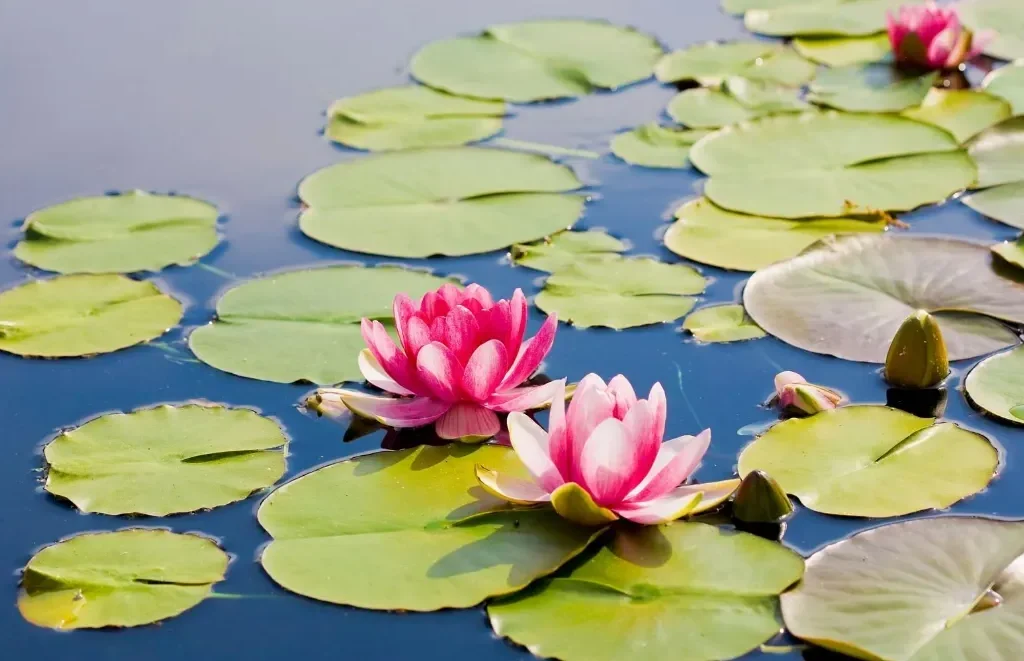
Healthy maintenance is the secret to continuous blooming.
- Remove Yellowing Leaves: Cut dying leaves near the base to prevent rot.
- Deadheading Blooms: Trim faded flowers to encourage new ones.
- Algae Control: Add floating plants like duckweed or oxygenators like anacharis to maintain balance.
8. Winter Care and Dormancy
In Tropical Climates: Lotus grows year-round with minimal care.
In Temperate Climates:
- Container Lotus: Move indoors to a cool, frost-free location. Let the plant go dormant by reducing sunlight and water.
- Pond Lotus: If tubers are planted deep (below freeze line), they’ll overwinter safely. Otherwise, remove, dry slightly, and store tubers wrapped in damp sand or paper.
9. Common Problems and Solutions
| Problem | Symptoms | Solutions |
|---|---|---|
| Algae Overgrowth | Green water, choking growth | Reduce sunlight, add oxygenating plants |
| Yellow Leaves | Old age or nutrient deficiency | Remove old leaves, use fertilizer |
| No Blooms | Lots of leaves, no flowers | Increase sunlight, check fertilizer balance |
| Tuber Rot | Black, mushy tuber | Avoid overwatering and plant in heavy soil |
10. Companion Plants for Lotus Ponds
Enhance your sacred pond by adding compatible aquatic or marginal plants:
- Water Lilies: Offer visual variety with floating flowers.
- Pickerelweed: Adds height and blooms to the edges.
- Creeping Jenny: Creates a beautiful trailing edge.
- Iris pseudacorus: Striking yellow flowers for contrast.
11. Aesthetic and Spiritual Value of Lotus in Your Garden
Beyond its ornamental beauty, the lotus creates a serene and meditative space. Adding a Buddha statue or traditional water features like a small waterfall or bamboo spout elevates the ambiance. The reflection of lotus blossoms in still water evokes tranquility, making it a centerpiece of Zen gardens or sacred spaces.
Final Thoughts
Growing lotus may seem like a spiritual endeavor—and in many ways, it is. The process mirrors the plant’s symbolism: from murky beginnings (muddy soil) arise spectacular blossoms that inspire peace and reverence. Whether in a backyard pond or a container water garden, the sacred lotus rewards your care with its unmatched grace and fragrance.
By following the steps and tips in this guide, you’ll not only cultivate a magnificent aquatic flower but also create a sacred oasis that brings beauty and calm to your outdoor space. Embrace the art of growing lotus, and let your garden bloom with spiritual serenity and tropical elegance.
